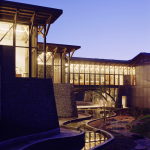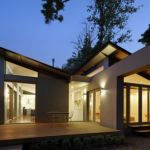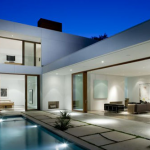WHAT IS THIS? new metallic GREEN ways
Posted by lorne, 5th July, 2011 3:24 pm

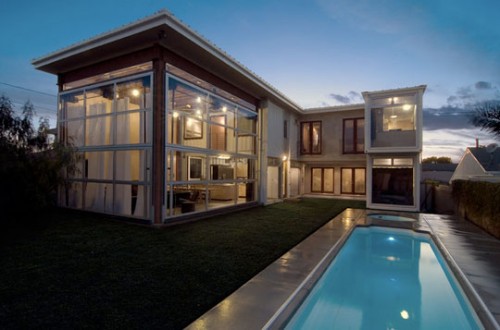
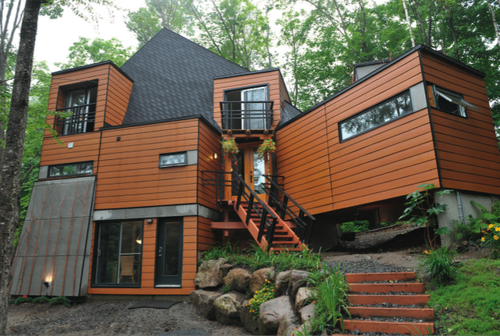
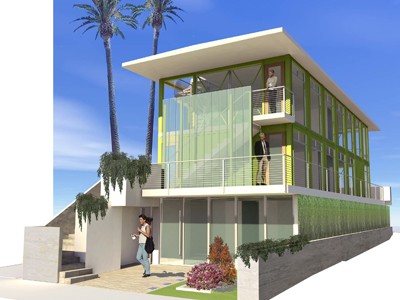
There is one thing all these buildings have in common.
Believe it or not, they are all made out of STEEL SHIPPING CONTAINERS. If you take a closer look, you can see the steel grooves of each of some of the boxes, as well as the odd rectangular prism shape.
Well, shipping containers have lifted logical recycling to new levels of epic-ness. They’re re-use simply makes sense.
Steel is an expensive material, but it is also structurally strong and lasting. The boxes are large enough to serve as a house frame, can be placed on top of each other as lego blocks and easily cut out for doors and windows. Look, how easily they are disguised into the look of a traditional house. The best part about this unique building method, is IT COSTS 20% LESS THAN A TRADITIONAL HOUSE.
The homes also make for excellent ice breakers at a bar. As well, think about all the history that is now in your house, all the stolen cars that once called the container home can be shared with you!
University of Toronto EXAM CENTER – LEED Gold
Posted by lorne, 24th June, 2011 8:19 pm

I am a student studying Civil Engineering at the University of Toronto. Ironically, the building in which I dread the most, is the closest to my heart.
This green hell-ish concept was designed from an old warehouse. It makes sense, all you need in an exam center are large open spaces for desks and chairs with enough room to encourage discourage cheating.
Onto the GREENIFYING!
1. Re-using the entire structure when possible is not only logical and cost-saving, but also contributes to LEED points (MRc `1.1 – Building Re-use – Maintain existing Walls, Floors and Roof)
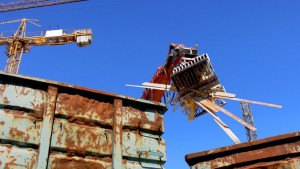
2. Electricity Reduction through the use of:
1. maximum use of natural light
2. a sophisticated lighting control system
3. high-efficiency T5 lighting fixtures
4. LED task lighting at each workstation
5. energy star appliances, computer monitors, displays and photocopiers
6. automated building controls (Direct Digital Control)
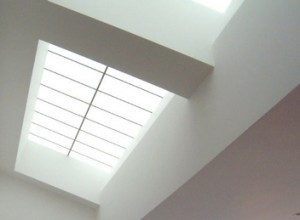
3. High SRI Rooftop made out of lightweight Concrete, keeps the building well insulated and keeps the temperature down during the summer.
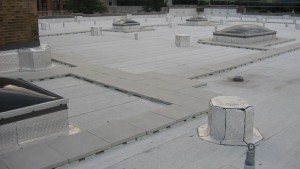
4. Rainwater is collected on the rooftop, held in a cistern and then used in the toilets to reduce water use by 62%
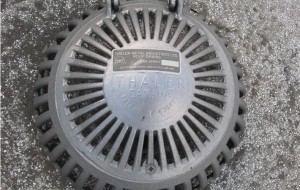
5. Standing Bike storage is used for space efficiency.
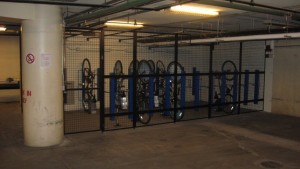
LEED NetZero Home
Posted by lorne, 23rd June, 2011 8:35 pm
Paul Rosen, the owner of this LEED home, talks about the sustainable heating and cooling of this home. This home is heated using an outdoor heat pump manufactured by Bryant. Paul explains that a heat pump is an air conditioner that can reverse its cycle, and instead of supplying the house with air that’s cool, it can supply the house with air that’s hot. These heat pumps were installed on the south side of the home so that based on the sun’s movements, they are in the bright sun in the winter and they are in the shade in the summer. According to Paul, these heat pumps are 20% more efficient at heating when they are located in the sun. Paul explains that heat travels in 3 ways: radiant heat, conductive and convective. The reason these pumps are more effective when in the sun is because a radiant heat effect is created that would not be there otherwise. Paul Rosen, the owner of this LEED home, talks about the sustainable heating and cooling of this home. This home is heated using an outdoor heat pump manufactured by Bryant. Paul explains that a heat pump is an air conditioner that can reverse its cycle, and instead of supplying the house with air that’s cool, it can supply the house with air that’s hot. These heat pumps were installed on the south side of the home so that based on the sun’s movements, they are in the bright sun in the winter and they are in the shade in the summer. According to Paul, these heat pumps are 20% more efficient at heating when they are located in the sun. Paul explains that heat travels in 3 ways: radiant heat, conductive and convective. The reason these pumps are more effective when in the sun is because a radiant heat effect is created that would not be there otherwise.
With all this heat pumping, how can this home be a Net Zero home? The almost non-existent heating bill is the result of the photovoltaic (PV) panels that generate the electricity necessary to power the heat pump. These PV panels also generate extra electricity during certain months that feed into the grid, and the home takes back what it needs during the cool nights in the winter.
In addition to using a heat pump to heat and cool the home, the home has a Radco storage tank and heat exchanger to supply the home’s hot water. This water is heated through the home’s Solar Thermal panels.
About the speaker: Paul Rosen is a sustainability consultant and founder of North Bay Energy.
LEED Garage? BANNED
Posted by lorne, 17th June, 2011 6:59 pm
When you think LEED, you DO NOT think GARAGE. But, believe it or not, that is one of the first things that come to a persons mind. Now that I am sitting down and thinking about it, it does make sense. In LEED there are so many credits attributed to reducing the amount of cars driven, specifically by one person. Many credits is Sustainable Sites award points for increasing bike use, pedestrian accessibility, public transit, carpool and discourage the single-use of an automobile.
So, it is logical that LEED would not allow Parking Garages, a complex with the sole purpose of supporting travel by car, to be LEED certified.
This news comes a 2 years after the first oxymoronic LEED parking garage was certified in 2008.
One valid argument PRO Garage LEED certification is the fact that a parking garage allows for more land to not be a hard surface. For example a 5 storey parking garage would take up 5 times less land than a parking lot needed to accommodate as many cars.
HOW LEED WORKS
Posted by lorne, 27th May, 2011 5:06 pm
SO, HOW DOES LEED WORK?
LEED is simply a point system, or a scorecard. The more energy efficient and “green” the building is, the more points it will earn. These points are earned through meeting credit requirements in LEED and there are 9 Categories in which to earn credits. As a part of our courses you will learn that there are 6 main categories below. The other 3 include the Integrative Process with 1 point and 2 bonus categories of Regional Priority and Innovation in Design
1. SUSTAINABLE SITES
Site Selection is the first step and arguably the most important part of the green building process. Its simple, the potential environmental effects of the project, depends on where you plan to build it. LEED awards the location you’ve chosen based on items ranging from proximity to PUBLIC Transit to bike storage and showers.
2. WATER EFFICIENCY
Water, like any other resource is finite. As the global population increases, so does the demand for water to be used in human and industrial processes. LEED awards the reduction of water used in toilets as well as the Re-use of
GREY WATER.3. ENERGY AND ATMOSPHERE
This category has the most points available and focuses on commissioning, energy efficiency, refrigerants and the original source of the energy
4. MATERIALS AND RESOURCES
MR deals with two items, reducing WASTE which is sent to landfills and Reducing the environmental impact of a building’s materials. LEED looks at how Materials are: Selected, Disposed and Reduced. Points are awarded for materials reuse, recyclying, renewable materials and maintaining a building already on the proposed site.
5. INDOOR ENVIRONMENTAL QUALITY
IEQ is a large section in LEED and addresses the environment INSIDE a building and how it affects the occupants inside. IEQ awards points for lighting, temperature, ventilation, indoor pollution and the amount of Daylight
6. INNOVATION IN DESIGN
This section of LEED awards points for inventive, sustainable and green building strategies which are beyond the scope of the LEED Rating System and not properly rewarded. There is a maximum of 6 points and having a LEED AP on the project is worth 1 POINT!













